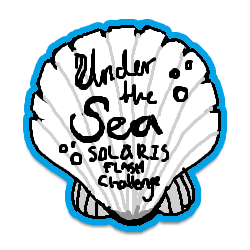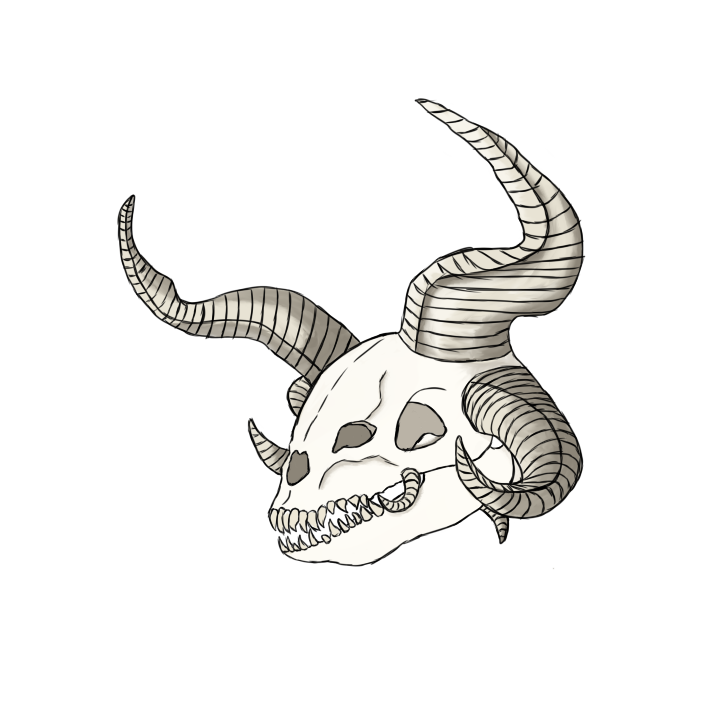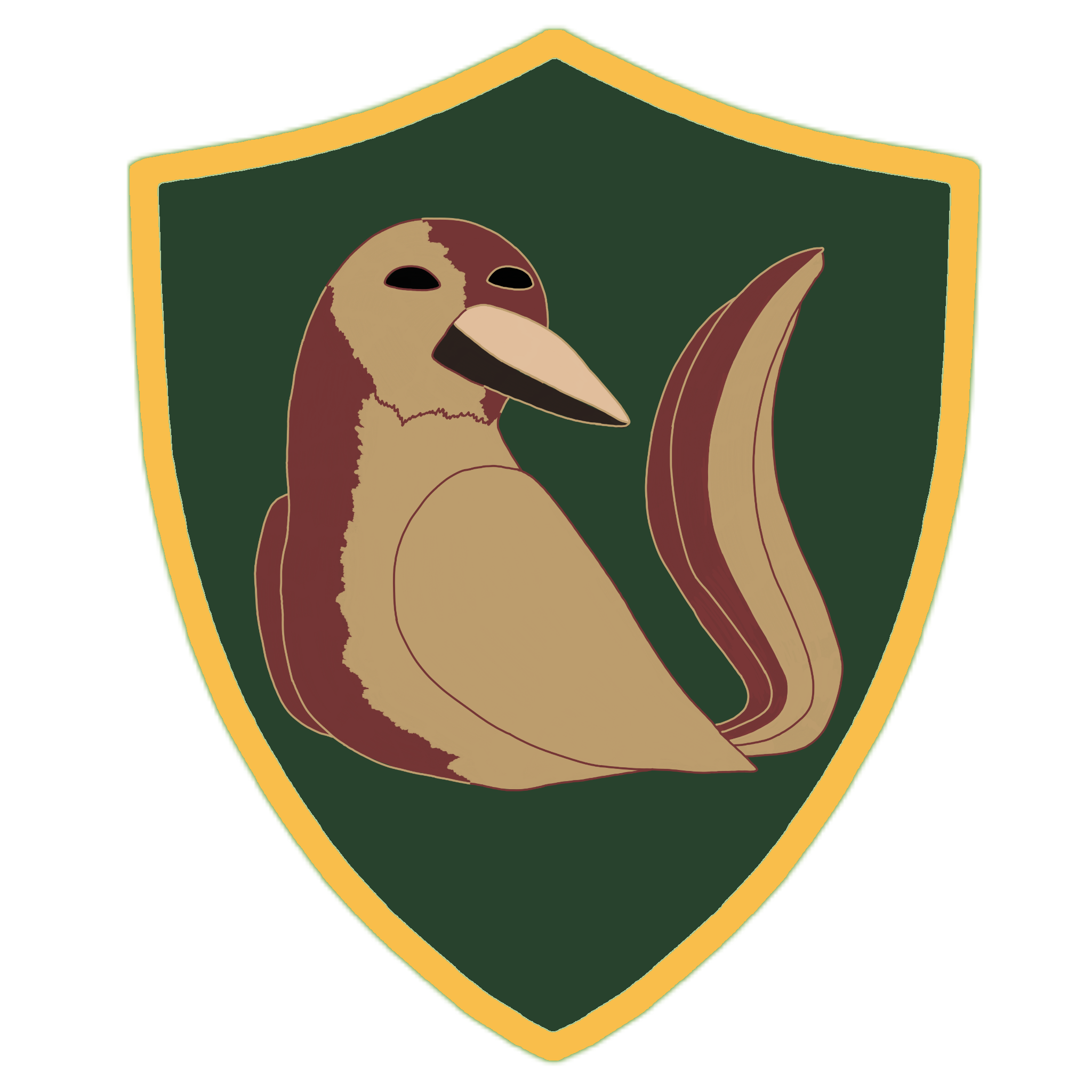Pentasepia
Ah yes, the glowing calamari have decided to turn up.
One of the most truly alien of the intelligent species inhabiting the galaxy, the Pentasepia are a species of marine invertebrate that resembles some sort of Terran cephalopod, most likely a cuttlefish, but with five-fold rotational symmetry around it's longitudinal axis. The Pentasepia genome is unique with it's inclusion of a fifth amino acid base, pentacine, which pairs with itself and allows for the encoding of a total of twenty five different amino acids. Pentacine is not found anywhere else in nature, and while the Pentasepia genome has been sequenced, its alien nature makes its study the life's work of generations of xenobiologists. Unfortunately for the Pentasepia, most other organisms find pentacine delicious, albeit slightly toxic due to difficulties in metabolising the alien proteins it forms. "Pentasepia" is the officially accepted name given to them by humans. What they are called in their own language is unknown due to the near impossibility of translating their colour and light based methods of communication.
Chromatic Language
Although attempts have been made to decipher the Pentasepia language, the complexity of their visual language, comprised of sequences of changes in skin colour and pulsing of bioluminescent photophores, combined with accelerating divergences in dialect and accent, have frustrated the efforts of xenolinguists ever since first contact was made. The first breakthrough in communication came from the Pentasepia themselves, after one of their computer engineers realised that by using their existing computer interface equipment, they could encode their own bioluminescent pulses in a way that resembled the descendent of Morse code that humans still used.
Gods and Mutants
Under normal circumstances and shielded from the ever present high energy cosmic rays by hundreds of meters of water, the Pentasepia genome with its fifth amino acid base is remarkably stable. However, a female Pentasepia's ovarian stem cells are particularly vulnerable to genetic corruption in the relatively high energy particle flux encountered in space. The vast majority of Pentasepia eggs formed in space are non-viable, and most females eventually become sterile after a hundred Standard Years in space. Those minority of viable eggs at first appear normal, and are normal for all intents and purposes, but they are in fact carriers for mutations that only begin to manifest after a number of subsequent generations.
The Mute
Pale and ghostly, the Mute ones are neither seen nor... I was going to say heard, but that doesn't really apply to Pentasepia, does it?
Only manifesting after five consecutive generations, the first major mutation that develops within a population is a form of hypochromia. Carriers of this mutation are characterised by a total lack of pigmentation across their entire bodies, rendering their chromatophores and bioluminescent photophores non-functional and giving their flesh a transparent or translucent look where the silhouettes of their internal organs are visible. This translucent tissue can take on a green or light red tinge depending on the concentration of chlorocruorin in their blood. Genome analysis suggests that the cause of this mutation is the deletion of nearly a fifth of the 25th chromosome. Due to their status within Pentasepia society, it is not known if carriers are able to reproduce or not. The inability to exercise their chromatophores or to bioluminesce renders them effectively mute and incapable of communicating with the rest of their species. They are forced to live outside of normal society, making it difficult to estimate how many carriers exist within a population at any given time. Cultural reactions towards carriers vary greatly between population groups. Some groups view them as ghosts or spirits of the dead, and hold a form of religious significance within their local communities. Other groups view them as the lowest of the low within society, the Least. Still other groups simply do not "see" them as if they do not exist at all, a fact which some individuals have come to exploit...
The Star Touched
Their bodies ripple with the twinkling constellations unseen by those who spend their long lives in the deep oceans. Is it any wonder that they have become their own gods?
Only manifesting after exactly twenty five generations, the second and by far the rarest and most fascinating mutation that develops within a population is a peculiar form of mosaicism. The few carriers of this mutation are characterised by irregular bands, patches, or patterns of dark, inky black skin that are speckled with undersized but hyperactive photophores that closely resemble stars seen by the naked eye through a terrestrial atmosphere. Genome analysis in regards to the cause of this mutation is difficult due to the difficulty of obtaining samples from the closely guarded carriers. The one sample studied revealed a mess of a genome with the 25th chromosome duplicated, the 5th chromosome partially replicated five times, and the 4th and 11th chromosomes missing entirely. It has been proven that carriers are sterile. Carriers of this mutation hold an extremely important position within traditional Pentasepia society, who revere them as living gods. They form the ranks of the Pentarchs, the five rulers of Pentasepia society whose word is as good as law. Due to the cultural importance of the Pentarchs, there should only ever be five of them at any given time, and on average this holds true. The appearance of a sixth within a population creates a problem. One of the six logically must be a false god, and the only way to resolve this is to reduce the number back down to five.






Thanks for taking part in the unofficial challenge! Creativity: 6,5 Verisimilitude: 4,5 Presentation: 5 The main thrust of my feedback for the Pentasepia would be to consider what kind of story you want the flow of the article to tell, and what you want their place in your setting to be. For the majority of the article we follow an outsiders perspective, focusing on their biology and the lack of understanding on how they work, but then in the section about the mutation we get a lot of detail about these mutations role in pentasepia society. This raises some questions about from whose perspective is the article written? You mention that Pentasepia is what they're called, because we haven't figured out what they call themselves... But they can communicate with morse code, and we know are told about all the societal things surrounding the two variants you present. It is unclear exactly what the state of things are now, and if the Pentasepia can now communicate, why can't they just tell people what they would like to be called? There are still a lot of things you could tell us about the Pentasepia that would be really interesting to read about. Where are they from? What kind of technology do they have? What is their interaction with other species? Why and how do they end up in spaceships, where they aren't doing so hot? What are the stories you want to tell that involve or revolve around the Pentasepia, and how can you work those things into the article? Last of all, that side-panel is looking mighty empty. It could be worth moving some or all text into the full width footer if you aren't planning on doing anything with it.
Creator of Araea, Megacorpolis, and many others.